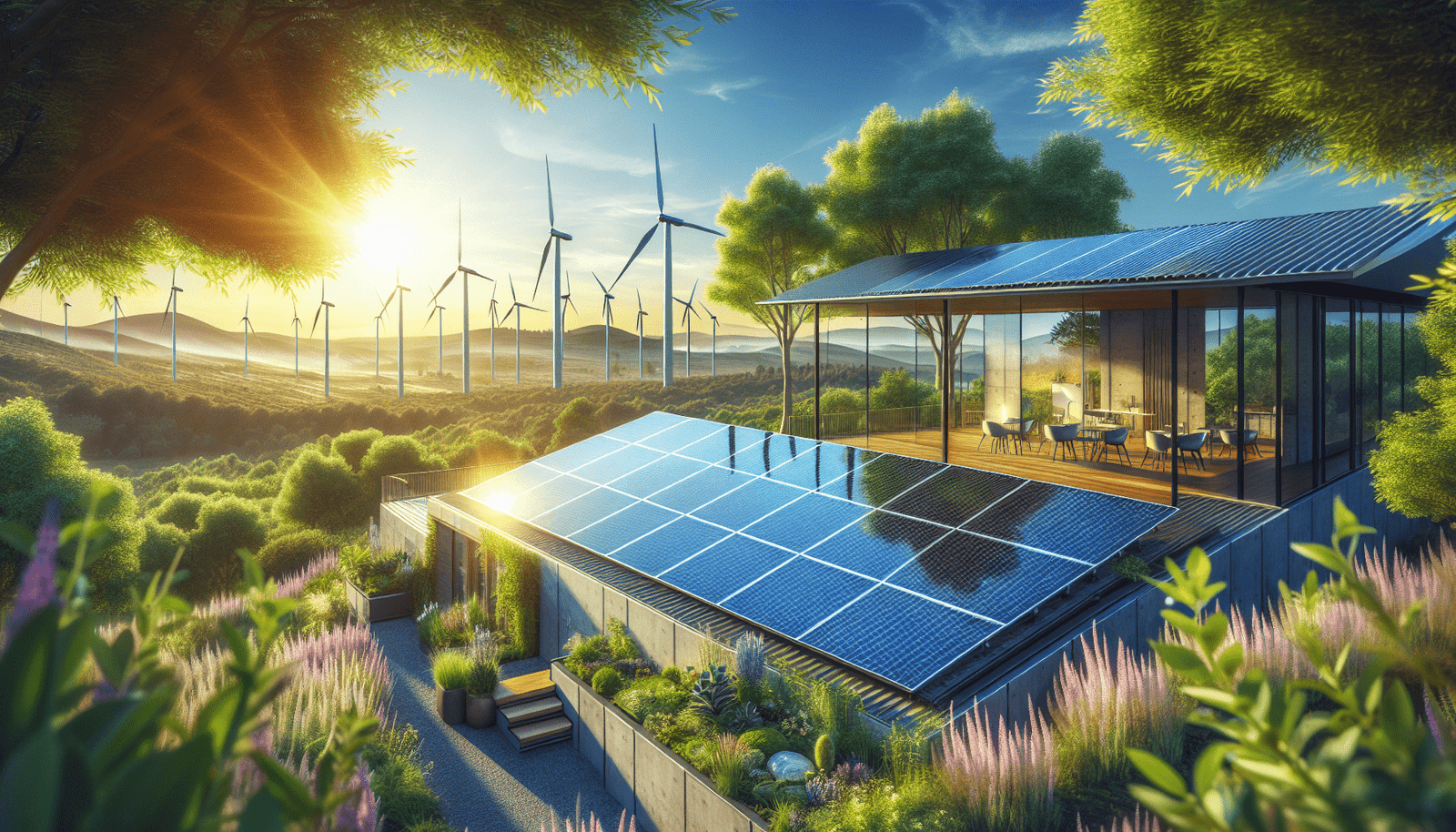Have you ever wondered how technology could lead us to a more sustainable future? Green technology has quickly become a hot topic, and for a good reason. It represents not just an innovation frontier but also a necessary revolution as we tackle the pressing challenges of climate change and environmental degradation. Let me take you through some exciting innovations in green technology that are paving the way for a sustainable future.
Understanding Green Technology
Green technology refers to the development and application of products, equipment, and systems that use renewable materials and energy sources, reduce emissions and pollution, and conserve the natural environment. This includes everything from energy-efficient appliances to advanced waste management systems.
Innovations in green technology are not just important for helping the planet; they’re also creating new economic opportunities. By embracing sustainable practices, I can contribute to a healthier ecosystem while promoting business growth.
Renewable Energy Sources
One of the cornerstones of green technology is renewable energy. Unlike fossil fuels, which are finite and release harmful greenhouse gases, renewable energy comes from sources that are naturally replenished.
Solar Energy
Solar energy has been a game-changer. Innovations in photovoltaic cells, which convert sunlight into electricity, have increased their efficiency dramatically. New materials like perovskite are being researched to create even more efficient solar panels, which can be produced at a lower cost. The beauty of solar energy is that it can be utilized in various ways – from large solar farms to individual rooftop installations. I appreciate how solar technology can empower homeowners to produce their own electricity, leading to lower electricity bills and a reduced carbon footprint.
Wind Energy
Wind power is another remarkable renewable energy source that has shown significant growth in recent years. Turbines have become more efficient, and the size of wind farms has expanded. I love reading about offshore wind projects, where giant turbines harness winds over the oceans, generating massive amounts of clean energy while minimizing the impact on land. I find it exciting how countries are investing heavily in wind energy, proving that we can harness natural forces for our benefit.
Energy Storage Solutions
While renewable sources like solar and wind are fantastic, they have one significant limitation: they are intermittent. The sun doesn’t always shine, and the wind doesn’t always blow. That is where energy storage solutions come into play.
Battery Technology
Recent advancements in battery technologies, particularly lithium-ion batteries, have allowed for better energy storage solutions. Innovations are focusing on increasing storage capacity and reducing costs. New technologies, such as solid-state batteries, show promise for even greater energy density and safety. For someone like me, who understands the importance of energy continuity, these developments mean we can rely more on renewable sources without the fear of power shortages.
Other Storage Methods
In addition to batteries, other innovative storage methods are emerging. Pumped hydroelectric storage, compressed air energy storage, and thermal energy storage all represent different ways to store energy generated from renewable resources. The variety allows for flexibility, catering to different geographical and environmental needs, which I find fascinating.
Sustainable Transportation
Transportation is another sector where innovations in green technology are making a significant impact. With millions of vehicles on the road, the quest to reduce emissions has led to exciting developments in sustainable transport.
Electric Vehicles (EVs)
Electric vehicles are taking the automotive world by storm. With advancements in battery technology, EV range is increasing, charging times are decreasing, and prices are becoming more accessible. I’m particularly excited about the growing network of fast-charging stations that make it more convenient than ever to own an EV. Many manufacturers are now pushing towards an all-electric future, and I can’t wait to see how this transforms our cities.
Alternative Fuels
In addition to electric vehicles, alternative fuels such as hydrogen fuel cells are gaining traction. These vehicles produce only water vapor as emissions and have the potential for rapid refueling. I think it’s incredible to see companies working on infrastructure to support hydrogen production and distribution, allowing us to embrace cleaner energy in transportation.
Smart Technology and IoT
The Internet of Things (IoT) is revolutionizing how we use technology in everyday life, including in the context of green tech. Smart devices help optimize energy usage, which can lead to significant savings.
Smart Grids
Smart grids utilize digital technology to manage electricity flow more efficiently. They can respond to fluctuations in energy demand and integrate renewable energy seamlessly. I love how smart grids can reduce energy waste while improving reliability. They not only allow consumers to monitor their energy consumption in real time but also encourage them to shift their usage patterns to times when renewable energy is most abundant.
Smart Homes
Smart home technologies – like thermostats, lighting, and energy management systems – make it easy for me to reduce my energy consumption without sacrificing comfort. By scheduling when lights turn on or off and monitoring energy utilization, I feel empowered to make choices that benefit both my wallet and the environment.
Sustainable Agriculture
Innovation in green technology extends far beyond energy and transportation; it also encompasses our agricultural practices. As our global population grows, finding sustainable ways to produce food is more critical than ever.
Vertical Farming
Vertical farming is a groundbreaking method that maximizes food production in urban areas. By stacking crops in controlled environments, vertical farms can produce food with significantly less water and land while reducing transportation emissions. I think it’s incredible how these farms utilize LED lighting and hydroponic systems to create optimal growing conditions year-round.
Precision Agriculture
Utilizing technology like drones, sensors, and data analytics, precision agriculture allows farmers to monitor their crops closely and apply resources more efficiently. By optimizing the use of water, fertilizers, and pesticides, farmers can increase yields and reduce environmental impacts. I admire how technology is helping to create a more sustainable food system.
Water Conservation Technologies
As water scarcity becomes an increasingly pressing issue, innovative water conservation technologies are crucial.
Desalination Innovations
Desalination has made strides in recent years, with advancements in membrane technology and energy-efficient processes. This allows for more accessible freshwater sources from saltwater, which could help alleviate water shortages in coastal areas. I find it encouraging that countries facing drought conditions are considering desalination as a viable solution.
Smart Irrigation Systems
Smart irrigation systems utilize technology to ensure that water is used efficiently in agriculture and landscaping. Sensors can detect soil moisture levels and automatically adjust watering schedules. This means I can help conserve water while still keeping my plants healthy.
Zero Waste Innovations
The concept of a circular economy—where waste is minimized, and materials are reused—has never been more important. Innovations in waste management and recycling technologies aim to combat the immense amounts of waste we produce.
Recycling Technologies
Innovative recycling technologies, such as advanced sorting systems and chemical recycling, are transforming how we handle waste. These methods increase recycling rates and make it possible to recycle materials that were previously non-recyclable. I am optimistic about how these advancements can reduce landfill waste and conserve natural resources.
Composting and Biomaterials
Composting technologies have also evolved, making it easier for individuals and businesses to compost organic waste. Products made from biopolymers are gaining popularity as alternatives to conventional plastics, helping to close the loop on waste. I believe these innovations signify a shift toward more sustainable consumption patterns.
Conclusion: A Bright, Sustainable Future
With a multitude of developments happening across various sectors, the innovations in green technology are paving the way for a more sustainable future. For me, it’s exciting to witness how we can leverage technology not just for economic growth but also for ecological restoration.
The journey towards sustainability is a collective effort – one that requires individuals, businesses, and governments to work together. I feel hopeful knowing that countless individuals across the globe are dedicated to creating, adopting, and promoting these innovative technologies.
In the face of challenges like climate change, the opportunities presented by green technology inspire me. It reinforces my belief that we have the power to shape a sustainable future – a future where technology and nature can coexist harmoniously. As I continue to learn and adapt, I look forward to participating in this journey towards a greener planet, one innovation at a time.






